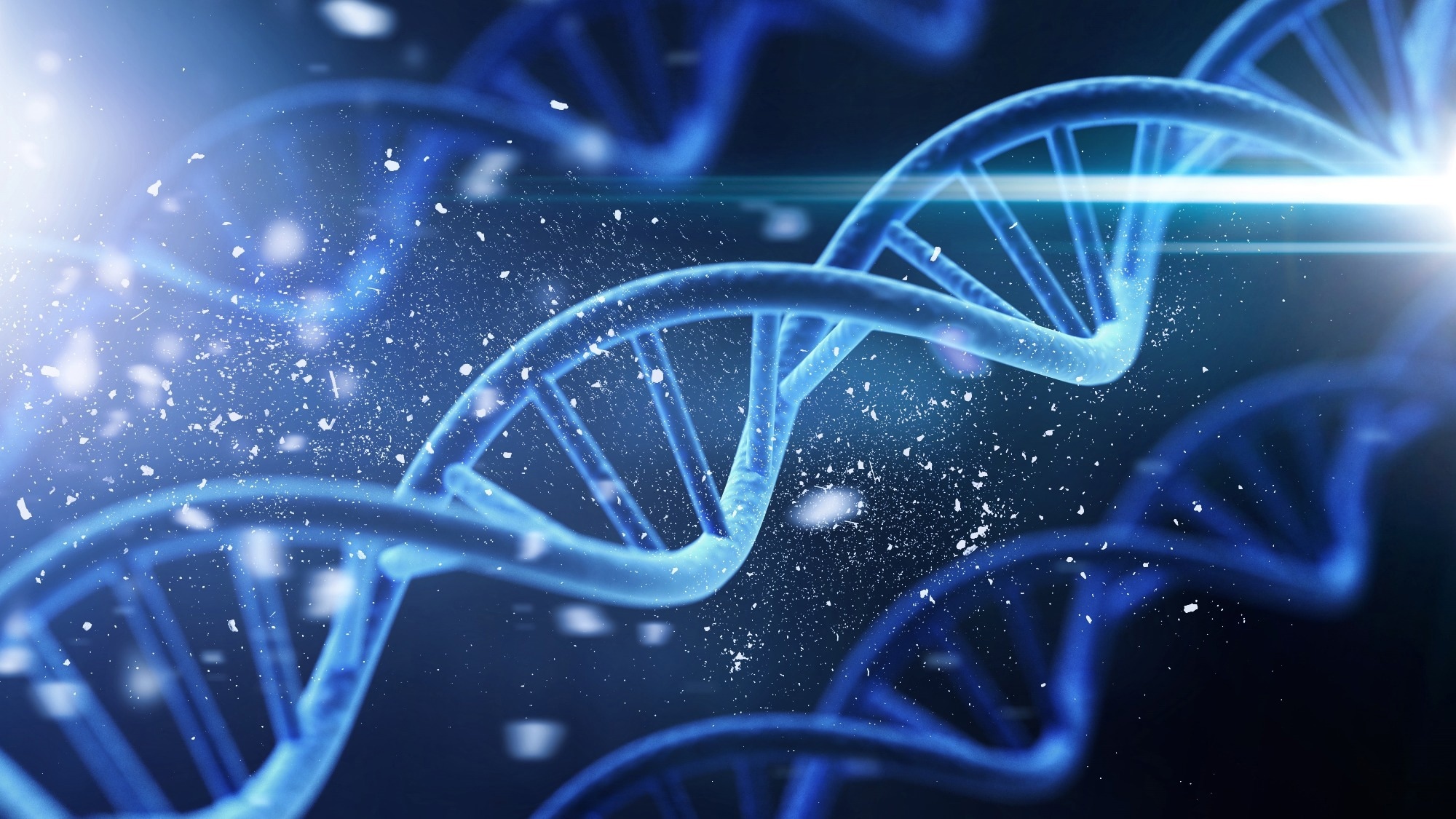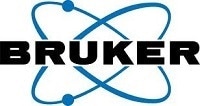From optical trapping experiments to insights into molecular force generation, Dr. Maxim Molodtsov shared how his research is uncovering the mechanical and structural underpinnings of cohesin’s role in genome regulation.
Watch the full webinar
What role does cohesin play in DNA loop formation and chromosome segregation?
Cohesin is a protein complex that holds sister chromatids together and helps organize DNA into loops essential for gene regulation and mitosis. It’s a ring-shaped structure with fairly long coiled arm domains that are about 50 nanometers long, as well as two ATPase domains.
My group’s research focuses on the three-dimensional organization and physical rearrangement of DNA during the cell cycle. This spatial organization is also crucial for gene expression, recombination, and DNA repair.
As cells divide, DNA is condensed into distinct chromosomes. The organization of and separation between chromosomes is essential for accurate cell division. We are investigating the mechanical forces that move DNA, create DNA loops, drive these around the cell, and reorganize them in three dimensions.
Cohesin holds sister chromatids together whilst cells divide. When cohesin is depleted, chromosomes simply fall apart. This role makes cohesin key throughout DNA rearrangements in the cell cycle. Cohesin’s resistance to the forces of the mitotic spindle is particularly important for this process.
It is believed that the shape of the cohesin complex allows it to hold cystid DNAs through a specific mechanism that entraps two DNA strands.
Studies later suggested that cohesin can create DNA loops, one of the primary means of organizing DNA and interface cells.
Techniques like chromosome confirmation and Hi-C have proven the importance of cohesin in the formation of DNA loops, confirming that if cohesin levels drop, DNA loops begin to fall apart.
 Image Credit: Billion Photos/Shutterstock.com
Image Credit: Billion Photos/Shutterstock.com
How did you use optical traps to measure the mechanical strength of cohesin?
Our goal was to find out if, by dynamically binding DNA, it was possible for them to resist the forces generated by a mitotic spindle.
To study this, we first established a system to mimic the interface between two molecules of DNA held together by cohesin. We started a glass slide and attached a molecule of DNA before binding this to a cohesin molecule.
Working with a single molecule is important because interpretation of results becomes very difficult when working with multiple molecules.
We made sure there was one cohesin molecule per DNA molecule by adding a fluorescent tag to the cohesin molecule and measuring fluorescence to verify its presence. We then added a second DNA molecule with a fluorophore attached, allowing us to verify its attachment to the cohesin.
To mimic the tension applied to DNA during mitosis, we touch a glass bead to the DNA or cohesin and use an optical trap to study its behaviour.
The optical trap uses a highly focused laser aimed at a confocal spot on a glass bead. This creates a strong, localized field that allows the bead to be moved with precision. It also allows researchers to apply force to the bead and measure that force accurately.
The basis of this experiment is pulling at the cohesin-bound DNA until it breaks, then analyzing this process to try to understand exactly what is happening.
We work with a JPK NanoTracker 2 optical trap from Bruker attached to a turf elimination system in order to visualize individual cohesin molecules assembled on a relatively standard flow cell.
Using this system, we attached a DNA molecule to a cohesin molecule and washed it with salt. As the salt level increases, the cohesin diffuses, moving back and forth on the DNA molecule. This process can be observed using a climograph. This step also bleached the cohesin in one step, which acts as confirmation that it is a single cohesin molecule.
Then we added the second DNA molecule with a fluorophore, visualizing the correlated movement between cohesin and DNA. We also measure the fluorescence, confirming the presence of a single molecule.
The DNA is stretched as we pull on the glass bead. As we do this, we can see the cohesin is holding onto the bead, but at some point, cohesin breaks, prompting the DNA to jump back to the bead while remaining intact. This experiment allows us to measure the force at which cohesin ruptures. Using a histogram of the detachment rupture force, we can see that the single cohesin ruptures at around about 20 piconewtons of force.
What did your experiments reveal about the weak points in cohesin's structure?
The simplest model we could use to learn about cohesin's interaction with DNA involves a single molecule of cohesin entrapping the DNA in a ring-like structure. Applying force should then cause the ring to break at its weakest point, regardless of how the force is applied.
There are not many points that can break in this cohesin, but there is the kleisin gate (a connection between two proteins) through which the DNA escapes in physiological conditions.
We wanted to see if DNA also escapes this way following the application of external force, so we covalently cross-linked this interface to ensure that the DNA could not escape from it. Our studies showed that the central force remained the same, suggesting that DNA is escaping from somewhere else.
Another potentially weaker interface is the hinge, where coils of DNA interact. We ran a similar experiment, loading cohesins onto the DNA and cross-linking the hinges, although only about half of the cohesins on the DNA were cross-linked.
The histogram of rupture forces looked very different here.
We saw two peaks, as we would expect from two populations of cohesins. Approximately half of these populations showed the same force as our previous experiment, meaning these are likely the complexes that did not cross-link. The other half showed much higher rupture force, however, suggesting that those molecules are cross-linked.
These higher forces suggest that another, much stronger interface is being broken as this one is closed. So, DNA is unable to escape easily, where strong covalent bonds link it to cohesin.
We also repeated the experiment using a second DNA molecule. This time, we loaded the second strand and ensured that a single cohesin molecule was holding both DNA molecules together before applying force and measuring the resulting rupture force.
In this case, we found that the rupture forces were similar but with the distribution slightly shifted. We realized that when we stretch two DNAs, it takes longer to break just because the DNA is longer. If we apply force for a longer period, the bond will break at a smaller amount of force.
We now think that cohesin hold the sister chromatids together by entrapping them physically, and that this physical entrapment can be ruptured by forces of about 20 piconewtons. We believe that the disengagement of this cohesin ring and this force may be an important mechanical regulatory mechanism.
For example, during mitosis or NFA, cohesin must be cleaved by separase to allow chromosomes to separate. This process is reversible, but in other contexts cohesin must be removed entirely to allow the DNA to close back up.
We also know that chromosomes sometimes breathe back and forth to allow cohesin to load and unload. This mechanical unloading may also be important in other processes, for example, during replication, when cohesin needs to be unloaded and then reloaded back on a replication fork. Part of this process may involve mechanical regulation, where the hinge interface disengages, allowing bulky machinery to pass through, engage, and disengage again.
Overall, we think that this mechanical disengagement may be part of the regulation process whereby mechanical force regulates the loading of cohesin on DNA.
How do cohesin's conformational changes contribute to its function as a molecular motor?
Cohesin is a well-established molecular machine that can extrude these DNA loops, but the mechanism used by it to do this is still largely unknown.
One of the fundamental properties of these machines is that they must be able to couple the conformational changes with a hydrolysis cycle and movement along the DNA.
We wanted to see whether different conformational changes in cohesin could generate force, to help us understand how these changes might push cohesin along the DNA.
There are two major conformational changes in a cohesin ring. One is called ‘head-to-head’, when the head domain moves back and forth, and the other is the ‘hinge-to-head movement’.
Common cohesin molecules were tracked with two tags. We used one tag to mobilize cohesin to the surface, and another tag was used via passive coil to separate cohesin from the bead and the trap.
We attached a bead held in an optical trap to apply the force to cohesin. A key benefit of this experiment was that this system allowed us to precisely monitor how conformational changes in this cohesin depend on how much force we apply. For example, if a hinge bends over to the head, the bead will have to move with the hinge, and we will be able to detect this movement.
We were able to collect data that corresponded to the cohesins of bent and unbent hinges. The distance inferred from this data was roughly what we would expect from structural data, indicating that we were seeing how head hinge bending occurs in real time.
In terms of how these bends depended on external force, we saw that cohesin remains largely unbent at around 1.5 piconewton of force, but that it also bends back and forth at around one piconewton and even smaller forces.
This dynamic reminded us of the influence of Brownian motion, which likely drives this movement instead of some sort of chemical transitions. We need to test this idea, confirming whether or not thermal fluctuations drive this bending and unbending.
We fitted our data with a simple three-state model to evaluate whether thermal fluctuations drove these transitions between fully bent, half-bent, and fully unbent states. The model fit our data very well, suggesting that it is thermal, Brownian fluctuations that drive this movement.
The next question we asked was, ‘What is ATP hydrolysis for in this instance, and what kind of movement does it drive?’. We looked at the head-to-head movement, using the same setup to look at the forces being generated. To do this, we immobilized one head, and instead of pulling on the hinge, we pulled on the head.
This experiment revealed a completely different picture. Head-to-head movement occurred at much higher forces, for example, five piconewtons and 10 piconewtons, moving back and forth at about 10 nanometers in size. This is exactly what we would expect from structural data and is consistent with other groups’ measurements using AFM.
What was interesting about this is that it did not matter how much force we applied within a certain range (up to 15 piconewtons). The rate at which this molecule’s domains opened and closed remained largely independent of the external force applied, unlike the exponential dependence on force that we would expect in a thermal Brownian ratchet case.
These findings suggest that this movement is different from the hinge-to-head movement. It is driven by chemical transitions rather than thermal Brownian fluctuations, meaning it is likely the ATP cycle that drives this movement.
In summary, there are two major conformational changes that generate force by two different mechanisms. Head-hinge bending is largely driven by thermal fluctuations, but the head-head movement is largely chemically driven and can generate much higher force.
We don’t currently know why you would need two different force generation mechanisms in one molecule, but one of the hypotheses we have is that during loop extrusion, we actually see two processes. We first need to bend the DNA to initiate the loop, and then we need to elongate the loop. It is possible that the two mechanisms are responsible for different phases of loop extrusions: one for elongation and one for separation.
What is the NanoTracker, and how does it enhance optical tweezer experiments?
The NanoTracker is an advanced, fully motorized optical tweezers system with high-resolution force and position measurement capabilities.
This is the second version of the device. The NanoTracker is built on an inverted microscope, which can be integrated with different kinds of light microscopy, including EP fluorescence, confocal, TIF, and TIC. It also supports many different microscope manufacturers, such as JICE, Nikon, Olympus, and Leica.
The NanoTracker features a user-friendly software platform that has automation capabilities, skip writing for spectrometry modes, and both CMOS and CCD cameras to visualize samples. The whole device is highly automated; users only need to insert a sample, and everything else is handled automatically through the software controller.
The NanoTracker can measure forces of up to 100 or 200 piconewtons. This depends upon the laser power in use alongside the 0.1 piconewton resolution. Not only can we measure the forces acting on a particle, but we can also track the position of the particle with sub-nanometer resolution.
The NanoTracker also offers a high data acquisition rate in megahertz and support for large bandwidth. It supports single, dual, and multiple traps, and multiple traps can be managed via time setting method, where we share time between different traps. However, the time allocated to each trap is so short that the traps do not register any interruption.
The amount of particles trapped is only limited by the laser power in use. For example, we could trap as many as 255 particles with a single trap. This is a class one laser instrument, so there is no need for additional laser safety goggles or a lab equipped with laser safety features. The system comes with two variants of laser power, 3 watts and 5 watts, and it features a 1064 nanometer wavelength laser.
A Petri dish heater is available for use with 35-millimeter Petri dishes. Samples can be heated up to 45 °C, and gas perfusion functionality is available, ideal for users working with living cells in long-term experiments.
Another useful sample-handling accessory is the magnetic twister, which is ideal for trapping magnetic particles and applying toxins to study their effects.
Can you describe how the laminar flow setup is used for DNA stretching?
The NanoTracker’s laminar flow cells feature five input channels and one output channel, meaning we can have five different fluids flowing into the instrument, allowing us to do different experiments in different channels without mixing fluids with one another.
For example, beads coated with streptavidin could be flowed into one channel, while in another channel, there are biotinylated DNA molecules. This allows us to apply fluorescence in situ hybridization (FISH) to the DNA molecules to perform a DNA stretching experiment.
This type of experiment uses two traps, trapping a DNA molecule in between these two traps. One part of the DNA (in trap one) is static, and one part of the DNA (in trap two) moves. As we move to trap two, we can record the forces acting on the DNA.
The setup for this experiment begins with a controller, which is used to control all the electronics in the system. It also communicates continuously with the computer in order to record and store the data.
On top of the controller sits the laser power supply and a laser steering unit. Various optical elements create multiple traps and allow them to be steered or modulated. The light is then directed along an optical path to the microscope head, mounted on an inverted Zeiss microscope. The light is guided by a dichroic mirror placed at a 45 ° angle before passing through a high numerical aperture objective.
This setup works by tightly focusing laser light, trapping a particle, and then using another detection objective to detect the position of the particle or the forces applied to it using a quadrant photodiode. The technique is called back focal plane interferometry.
Using the NanoTracker’s software, we can set laser power and distribute this power between traps. We can use an attenuation filter to ensure that the detection is not oversaturated.
A window allows us to use either a detection objective or a trapping objective, allowing for precise adjustment to the focal plane to trap particles. The NanoTracker also features motorized sample stages, allowing very precise movement. This includes nano positioning of the sample stages in all three directions (x, y, z), up to 100 micrometers.
The NanoTracker’s force spectrometer functionality is ideal here, because we want to stretch the DNA and then measure the forces acting on it.
Before measuring forces, we need to calibrate the optical tweezers using a power spectrum method. We also need to set the diameter of the particle that we are using, the temperature, and the density and viscosity of the medium in which the beads are trapped. Calibrating the power spectrum for a trap involves fitting it with a Lorentzian function. Proper calibration lets us see values such as sensitivity and the stiffness of the trap.
In an example experiment using this setup, we set up two traps, one static and one moving. We set the moving trap to extend the DNA by 12 micrometers at a rate of one micrometer per second. We also set the sample rate for the data to match this.
After performing force spectrometry, we can open the first spectrometer tab and choose the channel we want to view, which can be either trap one or trap two. In this case, we select the signal from the static trap.
The DNA broke once we extended the DNA by approximately 7.8, 7.9 micrometers. This was evidenced by the force spectroscopy results snapping back to zero.
How does the system detect when DNA is successfully tethered between two beads?
Once the force applied (which the system measures) increases above a threshold value as one of the traps moves, we know that DNA has been successfully captured.
For example, one channel of the laminar flow setup has 3 micrometer or 3.2 micrometer polystyrene beads coated with streptavidin and lambda DNA, which is coated with biotin. Biotin binds with streptavidin to attach DNA to the beads.
Once the trap is on, we can catch these beads. Assuming one trap is fixed and one trap moves in a circle looking for DNA, we can use a script to measure forces as the moving trap circles in 0.1 micrometer steps. If the recorded force rises more than 20 piconewtons above the baseline, this indicates that the DNA has been captured and spectroscopy measurements can begin.
Tools like the NanoTracker’s ramp designer are useful in these kinds of experiments, and it is also possible to automate experiments using the experiment planner, or by creating custom scripts in Java or Python.
Is it possible to integrate the NanoTracker with other tools like AFM, and how?
Optical tracking measurements can be performed alongside AFM measurements. The NanoTracker’s COMBI stage features a trapping objective for trapping particles, and we can place an AFM on top of this after removing the NanoTracker’s head.
Some users have already performed this kind of experiment to measure interactions between different types of cells.
Watch the full webinar
About the Speakers

Maxim earned his MSc from Lomonosov Moscow State University and completed his PhD in 2007 after research on microtubule forces at the University of Colorado Boulder. He later worked at the Russian Academy of Sciences, followed by postdoctoral research at the Institute of Molecular Pathology in Vienna, where he co-developed high-speed 3D imaging tools and explored genome architecture. Since 2018, he has been a group leader at the Francis Crick Institute and holds a joint appointment at University College London

With over five years of research experience, Randhir Kumar brings deep expertise in optics, photonics, and biophysics to industrial applications. At Bruker, he specializes in developing and calibrating advanced optical systems, as well as 3D microstructure fabrication using femtosecond laser-based two-photon polymerization. A collaborative and adaptable team player, he supports international scientific projects and helps drive innovation across development, sales, and applications teams.
About Bruker Nano Surfaces and Metrology

Bruker’s suite of fluorescence microscopy systems provides a full range of solutions for life science researchers. Their multiphoton imaging systems provide the imaging depth, speed and resolution required for intravital imaging applications, and their confocal systems enable cell biologists to study function and structure using live-cell imaging at speeds and durations previously not possible. Bruker’s super-resolution microscopes are setting new standards with quantitative single molecule localization that allows for the direct investigation of the molecular positions and distribution of proteins within the cellular environment. And their Luxendo light-sheet microscopes, are revolutionizing long-term studies in developmental biology and investigation of dynamic processes in cell culture and small animal models.